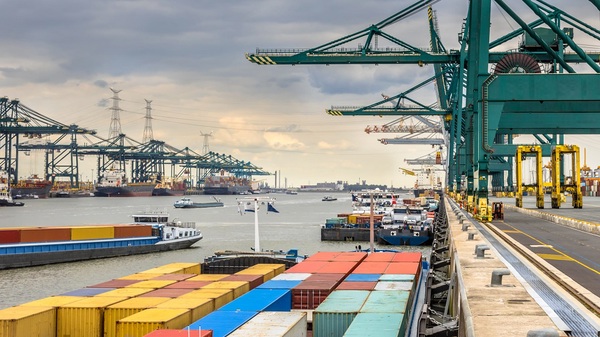Belgian study demands thorough review of IMO’s CII regulation
A study conducted by the shipping association Royal Belgian Shipowners' Association and the University of Antwerp highlights the “real world complexities and shortcomings of the IMO's Carbon Intensity Indicator (CII) formula.”
 PHOTO: Loaded ships in the busy port of Antwerp, Belgium. Getty Images
PHOTO: Loaded ships in the busy port of Antwerp, Belgium. Getty Images
The CII ratings in shipping are part of the International Maritime Organization's (IMO) efforts to reduce greenhouse gas emissions from ships. CII measures a ship's efficiency in terms of CO2 emissions per transport work, which is the cargo carried over a distance. Ships are rated from A to E, with A being the most efficient and E the least. This rating helps to identify and promote more energy-efficient practices and technologies in the maritime industry.
The study showed that various shipping segments have a complex mix of factors affecting CII ratings, making it challenging to identify the primary adverse variables universally.
However, the study identified three key variables with the most adverse impact on CII ratings: waiting time (time spent idling or waiting in ports or for orders), number of ports of call (how often a ship docks at different ports), and distance traveled (total nautical miles covered).
Instances
Container vessels' CII ratings are significantly impacted by the number of port calls, with more stops leading to worse ratings, the study found. Container ships usually make frequent port calls compared to other vessel types and this contributes to more waiting days. These factors impact the CII ratings of the container vessel, the study revealed.
Even among three VLCCs with similar travel distances, waiting times, and port calls, differences in CII ratings were observed, likely due to uncontrollable external factors like adverse weather. For LPG carriers, there is a clear link between waiting days and CII ratings. Carriers on congested routes with longer waiting times scored lower than sister ships with identical efficiencies on less busy routes.
Argument
The study argued that shipping is the most efficient way to transport goods, emitting the lowest GHG per ton of cargo. Improving the sector's carbon efficiency requires efforts from all stakeholders, including shipowners, charterers, port authorities, and customers.
It states that placing responsibility for a ship's efficiency solely on the shipowner overlooks the complexities and other influencing factors involved.
Recommendation
The study recommends that "a thorough review of the formula is necessary," considering the various factors beyond the control of both shipowners and charterers that influence CII ratings. Additionally, it states that "the scope and goal of the CII within the basket of measures need to be reassessed" at a higher level.
By Tuhin Roy
Please get in touch with comments or additional info to news@engine.online






